One of the great things about Remembrance Day is that it gives veterans an opportunity to share their stories with an interested public. Back in December, I came across an article in the London Free Press published just before Remembrance Day. It detailed the life of Tom Hennessy, a 95-year-old Spitfire pilot from the Second World War. As I read his story, I came across the section where Mr. Hennessy described his experience during Operation HUSKY, the Allied invasion of Sicily in 1943.
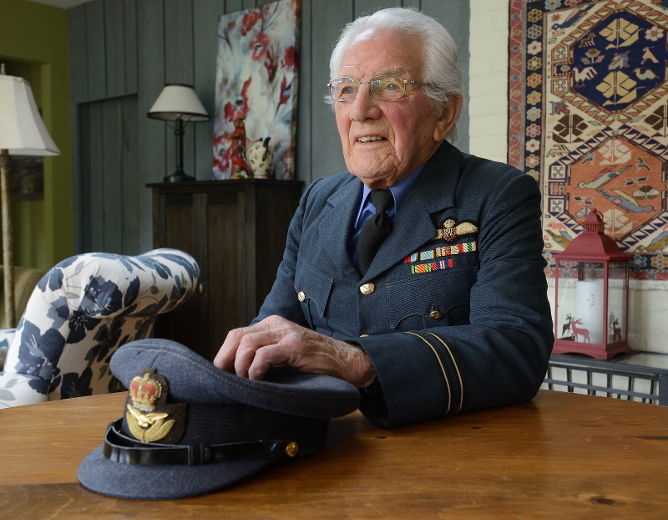
Having spent parts of the last five years completing Eagles over Husky, my book on this very subject, you might guess my reaction. I was blown away! I’d read memoirs written by those who had taken part in the air battle, and I’d even met a Canadian army veteran of the campaign, but I’d never gotten the chance to speak with an airman. I had to make this happen.
I began by reaching out to the journalist, Norman De Bono, who graciously provided me with Joyce Hetherington’s email. Joyce is Tom Hennessy’s wife. In turn, she connected me with Tom via email. I didn’t hear back immediately, but Joyce urged me to be patient. I gave her my phone number, and a week or so later I got a call from Tom. Once I realized who I was talking to, a grin creased my face for the remainder of the day!
Last Saturday we managed to meet up for an interview. Tom and I spent nearly two-and-a-half hours talking about his experiences during the war. He also had a lot of questions for me. As a sergeant pilot in Malta, he didn’t have much time for the bigger picture. His job was to fly his Spitfire and bring it – and himself! – home in one piece. Now he’s interested in learning more about the broader context of his wartime service. As Tom said,
It’s only when you, or when I come back or something and we talk like this that you think of other things. You just do your job and what you’re supposed to be doing. I was supposed to fly a Spitfire and do what I was told. That’s what you did. You didn’t get into who’s running it or who’s telling you to do these things. You go ahead and do them.
When the interview started he poured into his first wartime experiences – joining the Royal Air Force in Belfast, Northern Ireland, wearing a civilian suit to train in pre-Pearl Harbor Oklahoma, USA, his first solo in Spitfires over England, and his first operational sorties over Northern France. These sorties were called Rhubarbs. Using low cloud, RAF fighters and fighter-bombers would cross the English Channel and then drop below the cloud layer to hit anything that moved – railway locomotives and rolling stock, enemy troops and vehicles on roads, or aircraft at Luftwaffe airfields. As it turns out, low flying is one of the themes of Tom’s story.
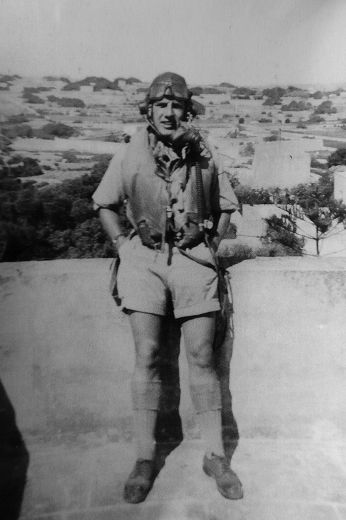
In autumn 1942, Tom found himself headed overseas once again. Instead of a civilian suit, he was given khakis and a pith helmet, indicating he was headed somewhere warm. A transport ship took Tom from Greenock to Gibraltar, where he waited as part of a reinforcement pool. Eventually, he was selected to join the RAF garrison on Malta and joined No. 249 (Gold Coast) Squadron at Krendi aerodrome. At that time, he remembers that only three Spitfire squadrons were defending the island.
Some months into his time on Malta indications were that something big was afoot. As Tom recalls, “and then the business started. There was going to be an invasion sometime, somewhere in Europe, southern Europe. It could have been any place; we hadn’t a clue.”
Tom and his mates knew something was up because of the massive buildup of aircraft on the island. In June 1943, Spitfire strength on Malta increased from five to 23 squadrons as the Desert Air Force joined the island’s fighter garrison. “They used to say if they bring any more squadrons into Malta it’s going to sink,” Tom remembers.
He says, after returning home on the eve of the invasion on patrol between Malta and Sicily, “I remember coming home from that night [and] there wasn’t a thing. The Mediterranean was like a lake, and there wasn’t a boat to be seen anywhere.” He also remembers how the routine changed for Operation HUSKY. Typically, the squadron operated with two flights in shifts. Each flight would be on duty for 24 hours at a time, meaning nearly 24 hours off. For HUSKY it was different. Tom recalls being woken up at 3 AM on 10 July 1943 for a briefing with Squadron Leader Eric Norman ‘Timber’ Woods. Only then did Tom and his mates learn for certain that the target was Sicily and that a massive invasion fleet had assembled off the coast of Malta overnight. They were to be ready at pre-dawn in case 249 Squadron was called on to support the invasion. The next weeks saw Tom and his mates flying offensive sweeps near the invasion areas and escorting fighter-bombers, bombers, and shipping around Sicily.
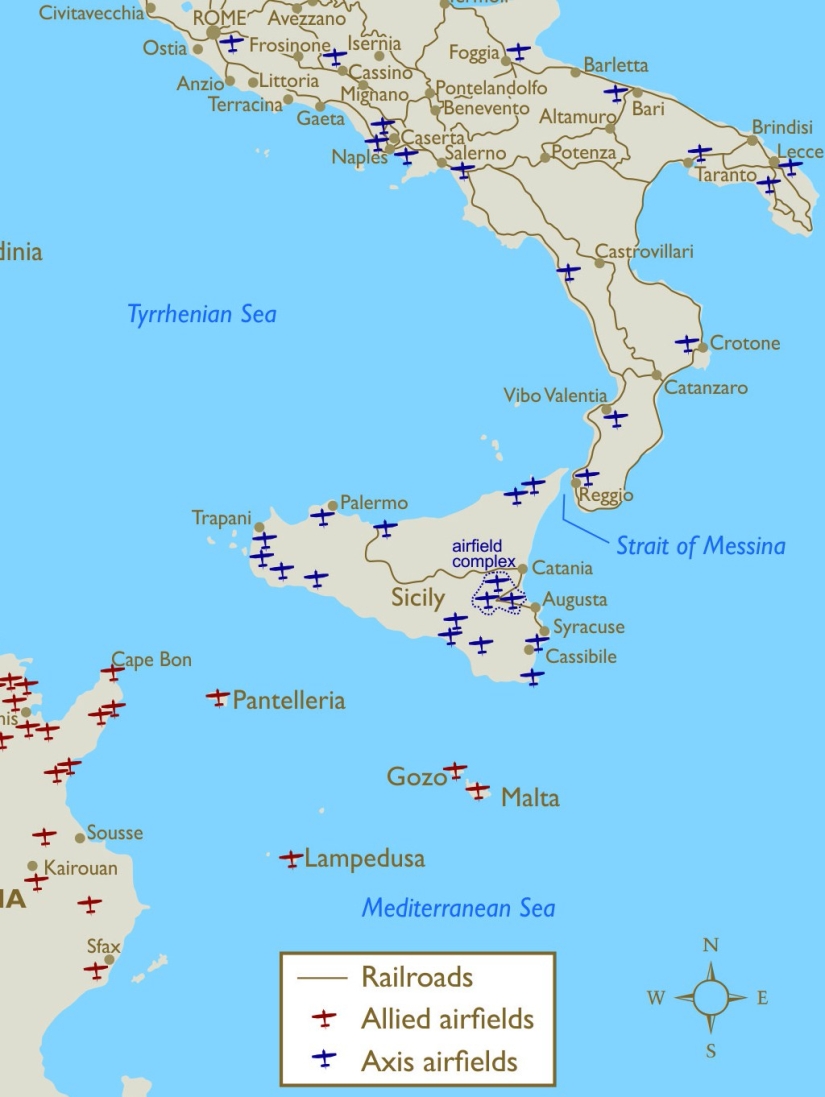
Tom recalls one mission vividly. Sometime after the fall of Palermo (22 July 1943), he and three other members of his squadron were ordered to fly from Malta to a beach near the city. The Americans had built a temporary landing strip on the beach using perforated steel planking (PSP), more commonly known as the Marston Mat. This was some great technology, but it took pilots some getting used to. Tom remembers that “when you landed on them you’d think the aircraft was falling to pieces. The noise was incredible – BANG!”
As ground crew refuelled their Spitfires, the four British fighter pilots were treated to some welcome American hospitality. “We always liked to land on American stations”, Tom recalls, “because they were well looked after. On the beach here in Sicily we had grapefruit, eggs, and bacon – oh, geez – and we sat on the beach!” They finished breakfast and climbed back into their Spitfires, each full of petrol and with bombs slung underneath the wings.
From there they took off and set a course for Capri, a small island off the Italian coast near Sorrento and Naples. Their target was a German radar station that was picking up Major General James H. Doolittle’s Strategic Air Force bombers as they approached Italy from bases in North Africa. To avoid being picked up by radar, the four-Spitfire flight flew their course down at wave-top level. They bombed and strafed their target successfully and returned home.
Tom wasn’t exactly sure when this attack took place. As he said in our conversation about when he arrived in Malta, “You know the years better than I do. You’re the historian; I just drove the things.” Naturally, placing this mission in its proper context is one of my next research tasks.
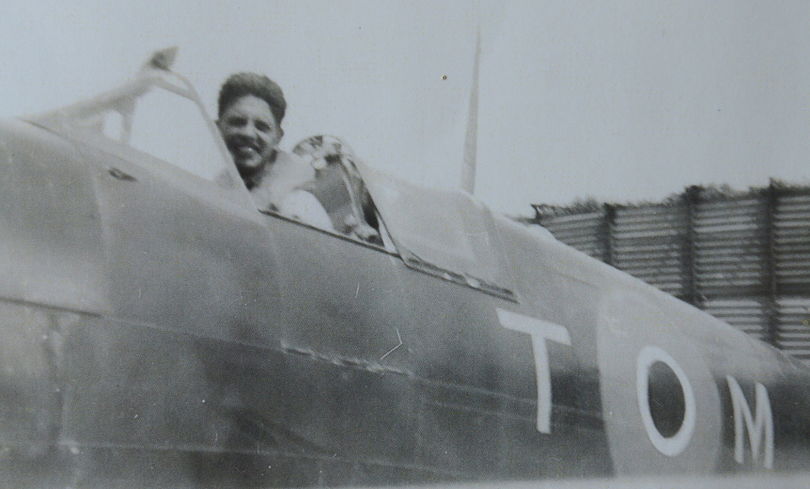
There’s a whole lot more that Tom has to offer. His story takes him to mainland Italy serving with the Balkan Air Force over Yugoslavia in support of Tito’s partisans. It also takes him to Egypt, where he helped train fighter pilots before they joined operational squadrons. After the war in Europe ended he even made it to India and began training to fly off carriers and survive in the jungle. Thankfully, the war in the Pacific ended before Tom got back on operations.
Perhaps more important is his message:
The only message that I leave with [young people] is that there’s nothing good about war. It’s so easy to glamourize it, but there’s nothing good about it. Nothing good … I travelled the world… I travelled from Oklahoma to India and all that kind of thing, but at what price?
I’m so honoured that Tom has chosen to share his story with me. He’s so engaged and wants to learn about my research. He is open to using my skills to help fill some of the gaps in his memory and his perspective. I left some of No. 249’s operations record books (ORBs) with Tom. He was excited to read the names of his mates alongside his own on various missions flown from Malta. As Humphrey Bogart’s character Rick Blaine says to Captain Louis Renault in the final scene of Casablanca (1942), “Tom, I think this is the beginning of a beautiful friendship.”
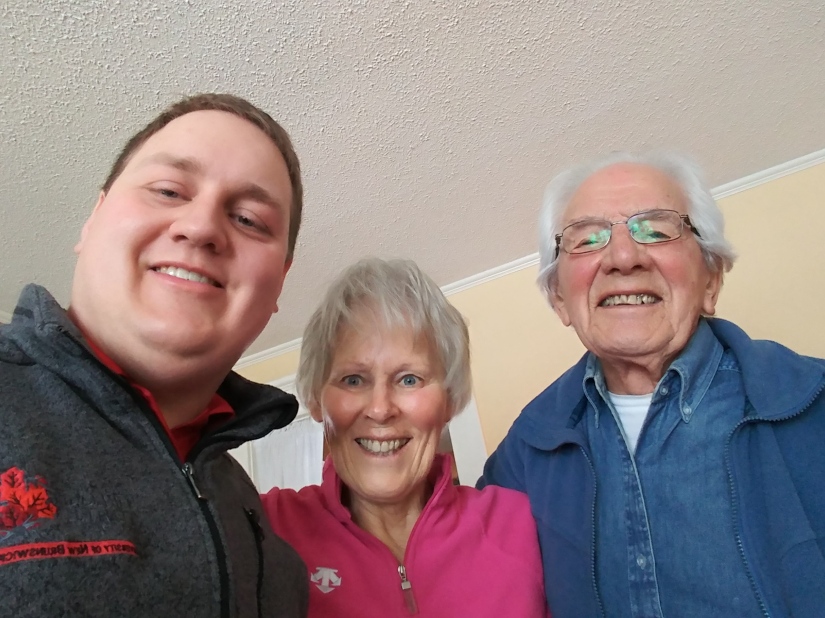


1 thought on “Flight Lieutenant Tom Hennessy”